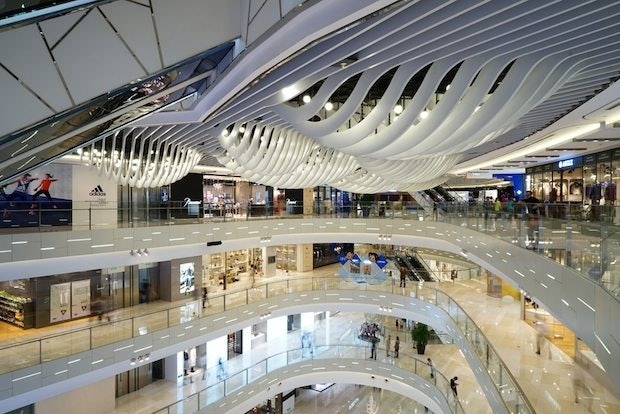
As China’s malls face growing competition with e-commerce for Chinese shoppers’ attention, they’re increasingly reinventing themselves in both the digital and lifestyle arenas with everything from new mobile technologies to art exhibitions.
According to a recent report by Taubman Asia titled “China Mall 2020,” the key drivers that are set to determine the future success of malls in China include the addition of lifestyle and social activities, the integration of online-to-offline (O2O) strategies, and the adoption of mobile technology.
Since Chinese shoppers can easily order products they want online, malls need to offer more lifestyle activities to attract them through the door, according to the report. It finds that their prospects of attracting foot traffic through these methods are good, as many of China’s newly affluent consumers see window shopping, or guangjie, as a “key pastime” as they rely on malls for social activities. “The growing effect of online retailing requires malls to evolve from a palace of consumption to palaces of experience,” says Christine Lam, the executive director of Aedas, who says that Chinese malls should move “away from the globalized ubiquitous retail environment to the creation of unique experiences by various means of implementation of tenancy mix, retail planning, spatial character, use of function, [and] social and cultural response.”
“Most shoppers in China’s shopping malls do not want to shop—they actually want to eat, they want to socialize, they want to go out, they want to escape their other part of their life,” says Gergely Bodo, the head of retail leasing at real estate consultancy TriGranit Management Corporation, in the report. “While previously the consumers’ priority was shopping, food, and fun, the tendency today is the opposite: fun, food, and then shopping.”
The report finds that the demand for non-shopping leisure activities in malls is actually quite high due to a number of factors in Chinese society, including a limited number of public spaces, smaller homes, and multigenerational living. As a result, malls have been increasingly adding live entertainment, music and fashion shows, restaurants, cinemas, ice-skating rinks, bowling alleys, and holiday celebrations.
On the higher end of the spectrum, cultural elements such as art exhibits have been brought into upscale malls to attract a discerning clientele. One of the biggest examples of these is Shanghai’s K11 Art Mall, which features a 3,000-square-meter gallery housing exhibits of works by high-profile artists, including Monet and Dali. In addition, a growing number of luxury retailers is embracing food service, such as Gucci’s new Shanghai restaurant and Vivienne Westwood’s new Shanghai cafe.
In addition to lifestyle and cultural elements, malls need to adapt to rapid changes in technology transforming the way people shop in China through O2O integration, the adoption of mobile technology, and new enhancements to in-store experience.
While brick-and-mortar is often thought of as the low-tech counterpart to online shopping, physical shops are introducing a wide range of cutting-edge in-store technology such as “motion and heat sensors, iBeacons, infrared, and mobile tracking software.” The report says that stores in China should follow Burberry’s example in London, where the store uses RFID chips to play multimedia content on screens as customers walk by, while interactive activities involving mobile devices allow stores to gather data while enhancing the consumer experience.
Many retailers are also adapting to the rise of e-commerce by creating integrated O2O shopping experiences. Fast-fashion retailer Zara has built its own app that allows shoppers to research and buy items online, while Beijing’s Wangfujing Department Store allows customers to order online and pick up in-store. “Zara is a really good example of a brand that is using mobile and technology to not change the actual retail experience but to add on and enhance it,” says Daryl Ho, the managing director of public relations firm Zeno Group. “You don’t feel like you’re getting a lesser experience by buying online.” In addition, as mobile commerce takes off, retailers are also increasingly accepting mobile payment methods such as Alipay and WeChat Pay.
The key for retailers, according to the report, is to view new developments in e-commerce and mobile shopping as opportunities rather than threats. According to Guohua Zhang, the China MD of Taubman Asia, “many malls in China are utilizing a powerful mix of digitally enabled strategies that leverage mobile, social platforms, and big data together with traditional marketing approaches. These kinds of innovations are critical to our approach for the market.”